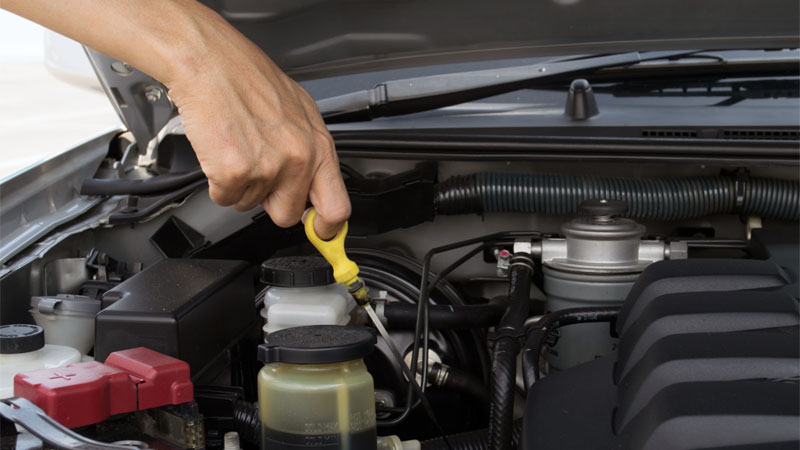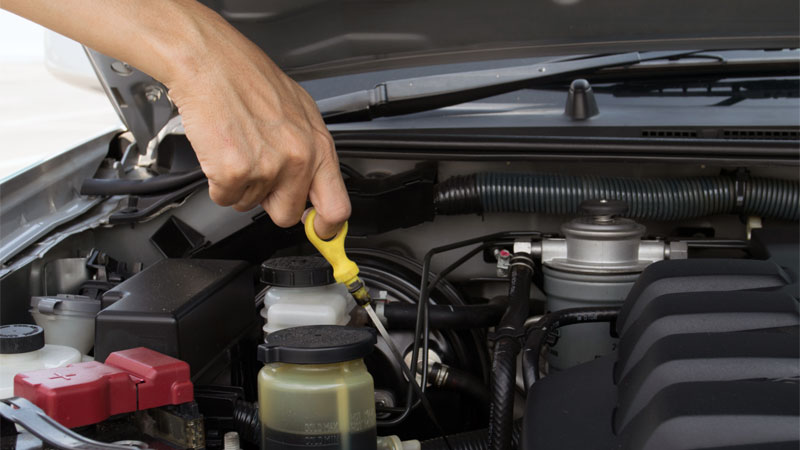As a car owner, it’s important to be knowledgeable about the different parts and systems of your vehicle, including the transmission fluid. Checking the transmission fluid is a crucial part of maintaining your car’s performance and ensuring its longevity. However, there’s often confusion around whether or not you should check the fluid while the car is running.
Many car owners believe that the car needs to be running in order to accurately check the transmission fluid levels. Others argue that it’s safer and more accurate to check the fluid while the car is turned off. In this article, we’ll explore the pros and cons of both methods and help you determine the best way to check your car’s transmission fluid. So, buckle up and let’s dive into the details!
It is generally recommended to check the transmission fluid with the car running and warmed up. This allows the fluid to circulate through the transmission and give a more accurate reading. However, some manufacturers suggest checking the fluid with the engine off. Refer to your car’s owner’s manual for specific instructions on how to check the transmission fluid.

Do You Check Transmission Fluid While the Car is Running?
Transmission fluid is an essential component of your vehicle’s transmission system, but do you know when and how to check it? Many car owners wonder if they can check their transmission fluid while the car is running. In this article, we will answer this question and provide you with all the necessary information to ensure your vehicle’s transmission system functions smoothly.
Why is Transmission Fluid Important?
Before we answer the question of whether you can check transmission fluid while the car is running, it’s essential to understand why transmission fluid is so important for your vehicle. Transmission fluid lubricates the transmission system’s moving parts and helps to regulate the temperature. It also helps to maintain the hydraulic pressure necessary for the transmission to function correctly.
Without adequate transmission fluid, the transmission system can quickly become damaged, leading to costly repairs or even complete failure. Therefore, it’s crucial to check your transmission fluid regularly to ensure your vehicle runs smoothly and efficiently.
Can You Check Transmission Fluid While the Car is Running?
Now that we understand why transmission fluid is essential let’s answer the question of whether we can check transmission fluid while the car is running. In most cases, you should check your transmission fluid when the car is running, as this provides a more accurate reading.
However, there are a few things to keep in mind when checking your transmission fluid while the car is running. First, ensure that your car is on level ground to get an accurate reading. Secondly, make sure that the transmission fluid is warm, as this will also provide a more accurate reading. Finally, check your vehicle’s owner’s manual to determine the correct procedure for checking your transmission fluid.
The Benefits of Checking Transmission Fluid Regularly
Checking your transmission fluid regularly can help you catch potential problems early, allowing you to make repairs before they become more serious and costly. Regular transmission fluid checks can also help to extend the life of your vehicle’s transmission system and improve its overall performance.
Additionally, by checking your transmission fluid regularly, you can ensure that your vehicle is running at peak efficiency, which can help you save money on fuel costs in the long run.
Transmission Fluid vs. Engine Oil
Transmission fluid and engine oil are two different types of fluids that serve different purposes in your vehicle. While engine oil lubricates the engine’s moving parts, transmission fluid lubricates the transmission system’s moving parts.
It’s important to note that transmission fluid is not a substitute for engine oil, and you should never use transmission fluid in place of engine oil. Always use the recommended type and grade of oil for your vehicle.
How to Check Your Transmission Fluid Level
Now that we know that you can check your transmission fluid while the car is running let’s take a look at how to check your transmission fluid level. Here are the steps you should follow:
- Ensure that your car is on level ground and the engine is running.
- Locate the transmission dipstick, which is usually labeled ‘Transmission’ or ‘ATF’ on most vehicles.
- Remove the dipstick and wipe it clean with a lint-free cloth.
- Reinsert the dipstick fully and remove it again to check the fluid level.
- If the fluid level is below the ‘Full’ mark, you will need to add more transmission fluid. Be sure to use the recommended type and grade of fluid for your vehicle.
When to Change Your Transmission Fluid
Just like engine oil, transmission fluid needs to be changed periodically to maintain its effectiveness. The frequency of transmission fluid changes varies depending on the make and model of your vehicle, as well as your driving habits.
As a general rule, most manufacturers recommend changing your transmission fluid every 30,000 to 60,000 miles. However, if you frequently drive in stop-and-go traffic or tow heavy loads, you may need to change your transmission fluid more frequently.
Conclusion
Checking your transmission fluid regularly is an essential part of maintaining your vehicle’s transmission system. While you can check your transmission fluid while the car is running, there are a few things to keep in mind to ensure an accurate reading. By following the steps outlined in this article, you can ensure that your vehicle’s transmission system functions smoothly and efficiently for years to come.
Key Takeaways:
- Checking transmission fluid while the car is running is not recommended by most experts.
- Some vehicles require the engine to be running to check the transmission fluid level, but it should be done in park or neutral with the parking brake engaged.
- Checking the transmission fluid level regularly is important to ensure proper vehicle performance and avoid costly repairs.
- If you’re unsure about how to check the transmission fluid level, consult your vehicle owner’s manual or a trusted mechanic.
- Ignoring low transmission fluid levels or dirty fluid can lead to transmission damage and potentially costly repairs.
It’s essential to understand the importance of checking transmission fluid levels regularly. While it might seem like a small task, it can help prevent significant issues down the road. Remember to follow the proper procedure for checking transmission fluid levels, and if you’re unsure, seek guidance from a trusted mechanic. By taking care of your vehicle’s transmission, you can ensure it runs smoothly and avoid costly repairs.
How To Check Automatic Transmission Fluid
As a professional writer, I understand the importance of keeping your car running smoothly. One of the most important components of your vehicle is the transmission, and checking the fluid is crucial to ensuring its longevity. However, the question remains: should you check your transmission fluid while the car is running?
The answer is not always straightforward. While some experts argue that it’s best to check the fluid level while the engine is running, others argue that it’s safer to check it while the engine is off. Ultimately, the best practice is to consult your car’s owner’s manual for specific instructions on how to check your transmission fluid. By following the manufacturer’s recommendations, you can ensure that you’re properly maintaining your vehicle and prolonging its lifespan. So, whether you decide to check your transmission fluid while the car is running or not, make sure to prioritize regular maintenance to keep your car running smoothly for years to come.

